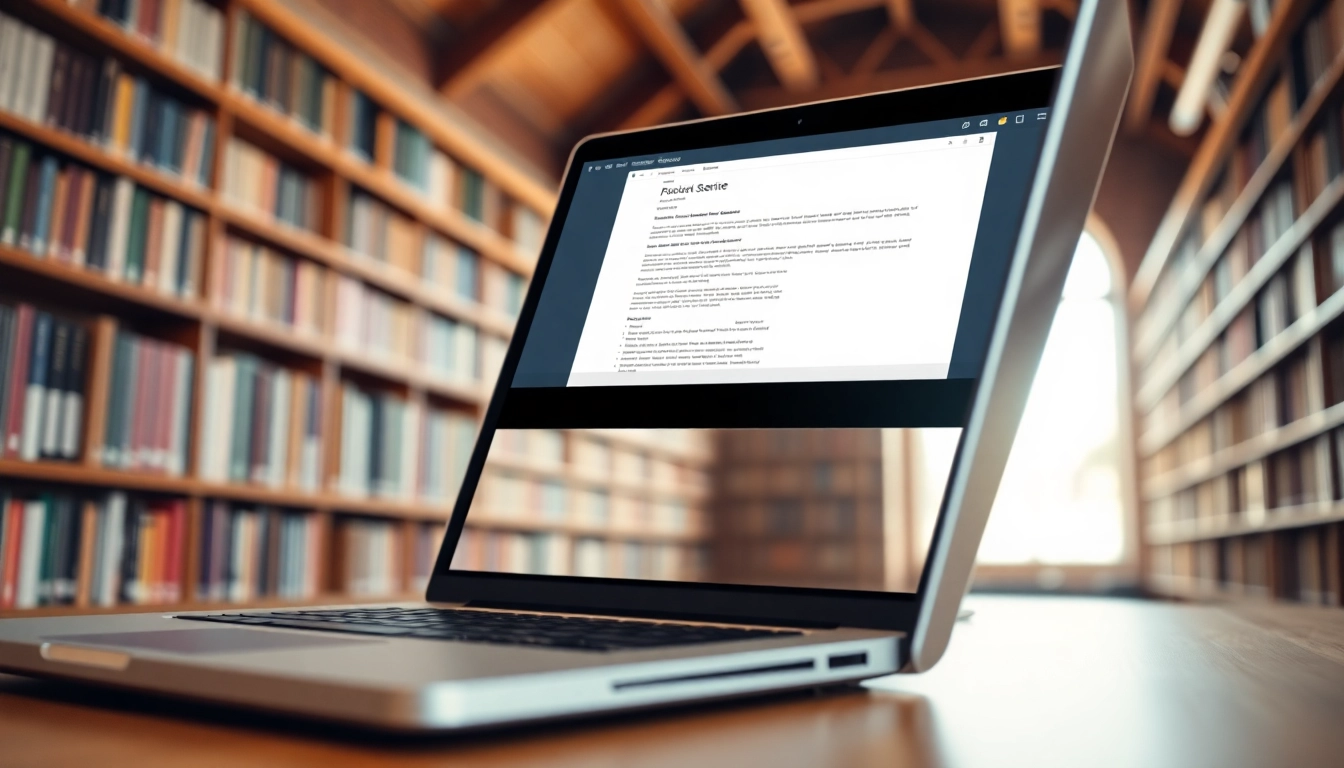Understanding Plagiarism Detectors
What is a Plagiarism Detector?
A plagiarism detector is a sophisticated software tool designed to identify instances of copied or closely paraphrased content in various written materials. These tools scan submitted texts against vast databases of previously published works, academic papers, and internet resources to determine original authorship and detect potential infringement. The utility of plagiarism detectors spans multiple domains, including academia, content creation, and publishing, making them essential for maintaining intellectual integrity across diverse fields.
How Plagiarism Detectors Work
Plagiarism detectors operate through a multi-step process that typically includes:
- Text Submission: Users upload the document they wish to check for plagiarism, which can be in various formats such as .doc, .pdf, or .txt.
- Database Scanning: The software compares the submitted text against its extensive database, which may include billions of web pages, academic publications, and previous submissions.
- Similarity Detection: The tool identifies portions of the text that closely match existing sources, typically highlighting sentences or passages that appear to be duplicated.
- Report Generation: Finally, the plagiarism detector generates a detailed report indicating the percentage of similarity, the sources of detected matches, and areas for possible citation correction.
This systematic approach ensures a comprehensive evaluation of a document’s originality and helps users identify potential issues before publication or submission.
Benefits of Using a Plagiarism Detector
- Maintaining Academic Integrity: For students and educational institutions, plagiarism detectors are crucial in upholding scholarly standards, ensuring students submit original work.
- Improving Writing Skills: By identifying areas of unintentional plagiarism, writers can learn to paraphrase and cite sources correctly, enhancing their overall writing skills.
- Protecting Intellectual Property: For authors and publishers, these tools help safeguard their intellectual property by highlighting instances of unauthorized use and enabling them to take necessary actions against it.
- Saving Time: In the fast-paced environments of academia and publishing, plagiarism detectors save time by quickly scanning documents, allowing writers to focus on improving content quality without extensive manual checking.
Key Features to Look For
Accuracy and Speed in Detection
When evaluating a plagiarism detector, accuracy is paramount. A reliable tool should provide precise reports with high sensitivity to different forms of plagiarism, including direct copying, paraphrasing, and patchwork plagiarism. Furthermore, the speed of detection is crucial, especially for users who need quick results. Many advanced tools use machine learning algorithms to enhance their accuracy and response times.
Support for Multiple Document Formats
The best plagiarism detectors accommodate various document formats, whether it be standard text files, PDFs, or Microsoft Word documents. This versatility ensures that users can check a wide range of submissions without needing to convert their files first, thus streamlining the process.
User-Friendly Interface and Experience
An intuitive and straightforward user interface enhances the experience for users, allowing easy navigation through the tool’s features. Effective filters and organization of results help users quickly interpret findings and highlight areas that need attention.
Free vs. Paid Plagiarism Detectors
Pros and Cons of Free Options
Free plagiarism detectors can be enticing for students and freelancers with limited budgets. They often provide basic features and functionality suitable for occasional checks. However, free options may lack depth in database access, thus potentially missing instances of matches, and might not offer detailed reporting capabilities.
When to Consider Paid Tools
Paid plagiarism detectors typically provide more robust features, including:
- Access to larger databases, including academic journals and proprietary content.
- Advanced comparison algorithms that enhance detection accuracy.
- Detailed reporting and analysis features that explain detected similarities.
- Higher prioritization for customer support and user feedback integration.
Organizations, educators, and frequent writers should consider investing in paid tools for the best results and comprehensive functionality.
Comparative Analysis of Popular Tools
Based on current market offerings, here are a few notable plagiarism detectors:
| Tool | Free Features | Paid Features |
|---|---|---|
| Plagiarism Detector | Basic text comparison | In-depth analysis and extensive database access |
| Grammarly Plagiarism Checker | Included in free Grammarly subscription | Full service with writing improvement suggestions |
| PapersOwl | Limited checks per document | Comprehensive feedback with premium features |
| Duplichecker | Basic checks available | Unlimited checks with subscription |
Best Practices for Using Plagiarism Detectors
Interpreting the Results Correctly
Understanding the results generated by a plagiarism detector is crucial. Users should not only focus on the percentage of similarity but also examine highlighted areas to assess where improvements or changes are necessary. Familiarity with how different types of plagiarism present can aid in better understanding the results and applying corrective measures effectively.
Incorporating Feedback into Your Writing
Plagiarism detectors are valuable not just for identifying issues but also for providing pedagogical feedback. Writers should use the feedback from these tools to enhance their citations, improve original phrasing, and develop better paraphrasing skills.
Ongoing Monitoring for Academic Integrity
Regularly using plagiarism detectors can reinforce a culture of originality. Schools and educational institutions should encourage students to utilize these tools frequently, fostering a strong commitment to academic integrity and discouraging plagiarism before it occurs.
Future of Plagiarism Detection Technology
Emerging Trends and Innovations
The plagiarism detection landscape is evolving, with emerging technologies promising heightened accuracy and efficiency. As artificial intelligence continues to develop, we can expect algorithms that can better understand context, meaning, and nuances in language, significantly refining detection capabilities.
How AI is Shaping the Landscape
AI-driven tools are revolutionizing the plagiarism detection field by providing smarter checks that not only detect copied content but understand the style and context of the text. Advanced AI can identify paraphrased content that traditional tools might miss, making it easier to detect potential infringement.
Ethical Considerations and Challenges
As plagiarism detectors become more integrated into academic systems, ethical challenges arise, such as the potential for over-reliance on technology and issues surrounding privacy and confidentiality. The challenge lies in ensuring the tools are used responsibly and effectively while promoting an environment conducive to original thought and creativity.



